What will happen in Tibet in 2020?
The year 2020 is set to be big for China’s long campaign to inextricably integrate Tibet, and assimilate the Tibetan nation into a single Chinese zhonghua identity. After decades of massive investment in infrastructure/superstructure, the economic integration is at last making Tibet accessible to the Chinese industries of the future.
Several initiatives by official China are due to come to fruition in 2020, with likely big impacts.
Here is a rundown of what to expect in 2020.
1 ALL POVERTY IN TIBET IS ELIMINATED
That’s what the headlines will say, not only in China’s official media but in media worldwide reacting positively, unless they are reminded in advance what China means by this misleading claim. What China calls poverty alleviation has a sting: it means depopulating the Tibetan countryside.
Read the fine print. China’s noble promise to end all poverty by 2020, to leave no-one behind, rests in Tibet on the governing concept of Contiguous destitute areas 个集中连片特困区贫困. This is an official territorial zoning category, that solidifies the racist Han Chinese assumption that Tibetans are poor, because they live in Tibet. That in turn rests on the assumption that Tibet, because of its altitude, thin air and low temperatures is naturally unproductive, and that no-one would choose to live in Tibet, if they had a choice.
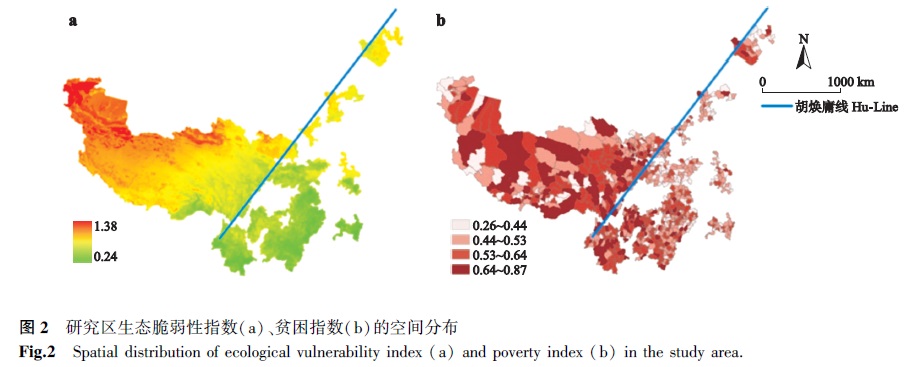
China is congratulated endlessly for having lifted hundreds of millions of people out of poverty, with only a few remaining, who are intractably poor because their homelands are, in Chinese eyes, so lacking in natural endowments that poverty is the inevitable outcome.
Thus the only solution for people classified as living in areas of contiguous destitution is to move them, for their own sake. In practice, this means cancelling Tibetan land tenure rights, requiring drogpa nomads to sell their livestock, removing them to concrete settlements and high rise apartments on the fringes of the booming new Chinese towns and cities across Tibet, with nothing to do, dependent on government rations.

So when China triumphantly announces it has fully solved the problem of poverty, that its “precision poverty alleviation” methods enabled millions of Tibetans to start new lives elsewhere, the world will applaud. Are Tibetans ready to tell the real story of reducing nomads to dependence on state ration handouts, claiming it successful poverty alleviation?
Tibet helps 150,000 shake off poverty in 2019.
From: Xinhua Economic News 7 Jan 2020
LHASA, January 7, 2020 (Xinhua via COMTEX) — Around 150,000 people have cast off poverty in 2019, and around 19 counties have been removed from the poverty list in southwest China’s Tibet Autonomous Region, said Qizhala, chairman of the regional government.A total of 155,000 people have received employment training and 186,000 people benefited from job placement projects supported by the local government, said Qizhala in his government work report delivered at the ongoing third session of the 11th People’s Congress of Tibet Autonomous Region.In 2020, Tibet will continue to give priority to poverty relief, Qizhala added.China has set 2020 as the target year to eradicate absolute poverty.
China Focus: Tibet basically eliminates absolute poverty.
Date: Jan. 7, 2020
From: Xinhua Economic News
LHASA, January 7, 2020 (Xinhua via COMTEX) — China’s Tibet Autonomous Region has basically eradicated absolute poverty, chairman of the regional government announced Tuesday. The feat was accomplished after Tibet lifted the remaining 150,000 people out of poverty and took 19 counties off the poverty list in 2019, said Qizhala in his government work report delivered at the third session of the 11th People’s Congress of Tibet Autonomous Region. “Absolute poverty has been basically eradicated (in Tibet),” said Qizhala. “We are poised to achieve the overall victory in the fight against poverty. “Known as the “roof of the world,” Tibet is famous for its picturesque plateau landscapes and splendid ethnic cultures. It is also one of the main grounds in China’s nationwide campaign against poverty. Accumulatively, Tibet has lifted 628,000 people out of poverty, and delisted 74 county-level regions from the poverty list, according to data from the regional government. “It is of great significance in the development of the Tibetan people to basically eliminate absolute poverty, given the adverse natural conditions on the plateau and the region’s underdeveloped social conditions,” said Wang Zhuo, a public administration expert with Sichuan University. “It also attests to the success of the Chinese model of development on the high plateau and offers the world an exemplary case,” said Wang, who is also the director of an anti-poverty research center. In Tuesday’s work report, Qizhala said the gross domestic product (GDP) in Tibet was estimated at more than 160 billion yuan (around 23 billion U.S. dollars) last year, up about 9 percent year on year. Per capita disposable income for the region’s rural residents grew about 13 percent, while that for urban residents rose more than 10 percent, said Qizhala. In 2020, Qizhala said Tibet’s GDP is expected to maintain a stable growth of 9 percent. The total retail sales of consumer goods aim to grow 10 percent this year. Meanwhile, the per capita disposable income for the region’s urban and rural residents in 2020 is estimated to grow 10 percent and 13 percent, respectively. Qizhala added that the region aims to create 50,000 urban jobs and ensure that the registered unemployment rate does not rise above 3.6 percent.
Tibet’s tourism sector, a pillar of the regional economy, also saw robust growth in 2019, with tourism revenue rising to 56 billion yuan (around 7.9 billion U.S. dollars) and more than 40 million tourists from home and abroad visited the region, up 19 percent year on year. Tibet will continue to develop its tourism industry in 2020, with an aim to attract over 47 million tourists and increase the tourism revenue to over 60 billion yuan, Qizhala said. “We will build Tibet into an important destination for global tourism and promote our tourism brand as the world’s Third Pole,” he said.
RUKOR COMMENT:
The official delisting of a further 19 dzongs (counties) from the list of counties eligible for poverty alleviation funding, brings to a total all the 74 dzongs of TAR. The removal of every county in central Tibet from the list of counties designated as poor removes a substantial source of transfer payment support which in recent years has significantly boosted household incomes.
Official poverty funding invariably came with strings attached, for example a requirement that the money was to be spent on fencing herds into allocated pastures, or that a permanent winter housing had to be built on allocated land. Often, the purchase of fencing wire was compulsory, or the rolls of fencing wire were delivered in lieu of cash, or the resettled nomad drogpa had to contribute additional funding of their own to complete these projects, even if it meant going into debt. In areas subsequently declared national parks, drogpa were later required to dismantle the fencing they had erected, to allow migrating biodiversity to resume seasonal migration unhindered by having to jump fences.
One opportunity to remind folks that poor people above all need their own land, and secure land rights, is the World Bank Land and Poverty conference: 16-20 March 2020 location: Washington D.C.
All Chinese citizens now have an online portal to let the government know if they object to official policies: http://www.npc.gov.cn/fgba/fgba/bascPortalManager.do?method=gotoScjyIndex
2 14th FIVE-YEAR PLAN WILL BE FINALISED
Central planning is not dead, nor is China becoming a normal capitalist economy dominated by private enterprises selling consumer goods and services for consumption by the masses. The centralised command and control economy has been strengthened in recent years, and the role of state owned enterprises (SOEs) has intensified. Those SOEs in Tibet build the hydro dams, power grids, high speed railways, wind and solar power farms, mines and smelters, which have such impact, especially in the remote locations that happen, from an engineering point of view, to be best sites to locate dams.
The 14th Five-Year Plan runs from 2021 through 2025. It will be debated in elite circles, and finalised in 2020. Accessing the debates is not hard, as there are plenty of players pushing in various directions, including many nonChinese investors, advisers and NGOs with a stake, well entrenched in the official system, who routinely publish their analysis and advocacy for their preferred policy directions. This makes 2020 a year in which we can follow how the 14th Plan is shaped.
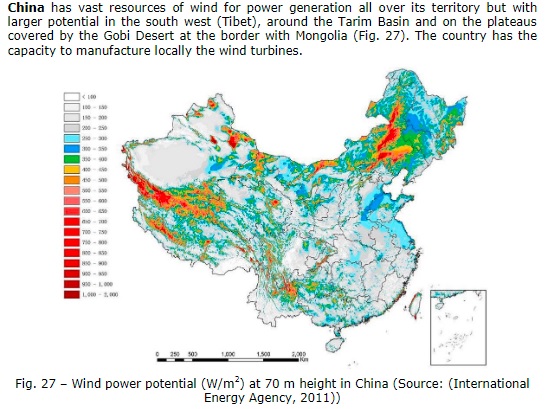
Expect the 14th Plan to emphasise nation-building programs including west to east power grids transmitting ultra-high voltage electricity from Tibet to coastal China. Expect the start of big investments in wind energy generation in Tibet, especially in Kham where the winds are strong, in rugged landscapes, and close to the hydro dams and power grids. Expect the completion of the high speed railway from Chengdu to Lhasa, cutting travel time to 13 hours. Expect the completion of the high speed rail from Xining to Chengdu via Rebkong, Labrang, Machu, Jiuzhaigou Tourist Park and on to Chengdu, bringing millions more Han tourists to Tibet. Expect rail and tollway connections from Kunming via Dali and Lijiang to Dechen to be completed, again funnelling more and more mass domestic tourism into Tibetan areas.
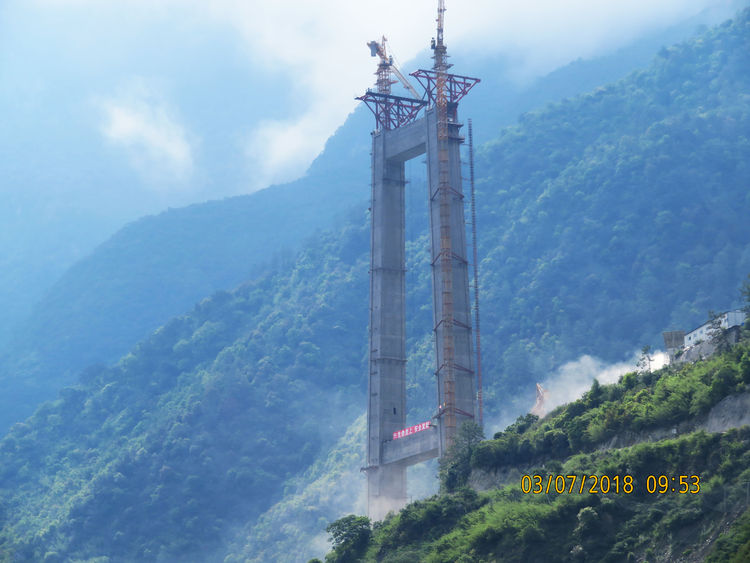
Expect more museums to re-present Tibetan culture safely under glass. Expect old town centres, with their traditional architecture, torn down not long ago, to now be rebuilt with traditional facades and upmarket e-commerce boutiques inside, in many tourist destinations.

Expect a real estate boom around Nyingtri, as luxury villas take the best spots for the now-famous peach blossom season each year.
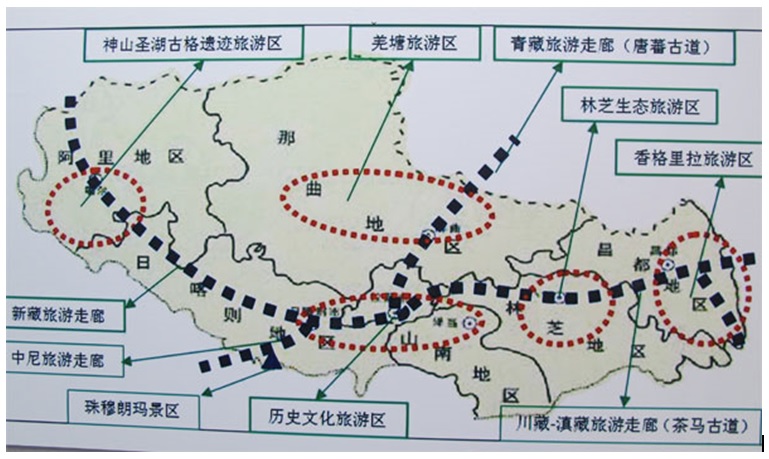
Expect central Tibet to expand its menu of destinations, beyond Lhasa, creating a circuit of airports from Chamdo in eastern TAR to Ngari Kailash in the far west, encouraging more tourists, enabling a spread of tourist arrivals.
Tibet receives over 40 mln tourists in 2019. Date: Jan. 7, 2020
From: Xinhua Economic News
Last year, tourism revenue rose to 56 billion yuan (7.9 billion U.S. dollars), Qizhala, chairman of the regional government, said in his government work report delivered Tuesday at the third session of the 11th People’s Congress of Tibet Autonomous Region. Tibet will continue to develop the tourism industry in 2020, with an aim to attract over 47 million tourists and increase the tourism revenue to over 60 billion yuan, Qizhala said. “We will build Tibet into an important destination for global tourism and promote our tourism brand of the world’s Third Pole,” he said.
RUKOR COMMENT: This extraordinary number ranks central Tibet (TAR) as a bigger destination than Germany, UK or Thailand, according to the UN World Tourism Organisation barometer of tourist data. Overwhelmingly the tourists crowd into Lhasa, are overwhelmingly Han Chinese from lowland China, and comes in surges in seasonal holiday periods.
The 2019 Qinghai Statistical Yearbook says in 2018 Amdo/Qinghai received 42,044,000 tourists, of whom 41,975,000 were domestic tourists, only a handful were foreigners. TAR Statistical Yearbook shows that year after year, non Chinese foreigners are no more than one per cent of total tourist arrivals.
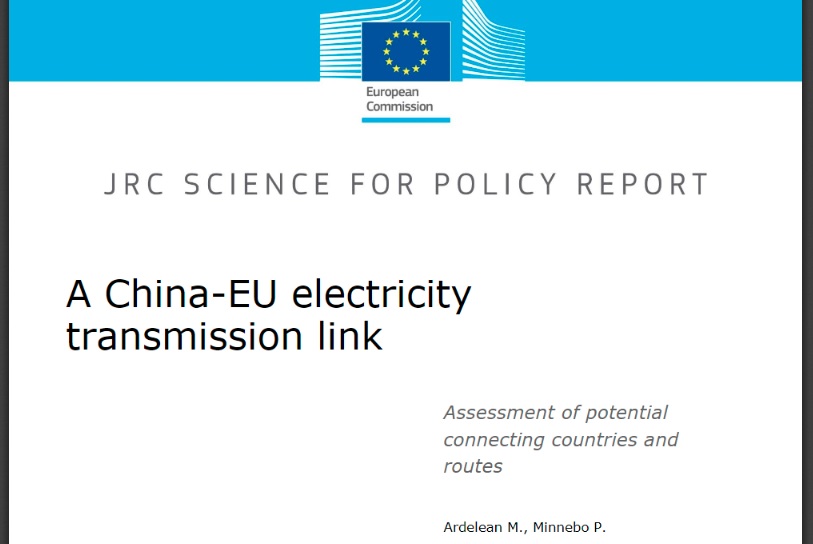
Expect serious planning to extend ultrahigh voltage power grids from Tibet not only to coastal China but also westward, across central Asia, perhaps as far as Europe. These plans, already under evaluation by the European Commission, would give Tibetan hydro dams, wind power and power grids an integral role on China’s Belt & Road Initiative.
3 NEW NATIONAL PARKS WILL BE LAUNCHED IN AMDO AND KHAM
National parks are a great idea, far better than destructive mining and dam building. Everyone loves national parks. But national parks with Chinese characteristics, to be opened in 2020 with maximum propaganda, are overwhelmingly in Tibet, for a reason. The area designated as national parks is huge, with plans for steady expansion beyond the 2020 launch, to cover around 30 per cent of the whole Tibetan Plateau, including the prime alpine meadow pastures of Yushu and Golok prefectures. This sets up a contradiction between grass and animals, between skilful pastoralism and pristine unpeopled wilderness.
China has for decades cleared Tibetan nomads off the lands they curated sustainably for thousands of years. In Chinese eyes, nomads are little better than the animals they herd, wandering the landscape randomly, they are primitive and prehistoric.
Along with poverty alleviation, the inception of massive new national parks in Tibet provides seemingly scientific justifications for removing the land owners. This is not just a tricky political manoeuvre to depopulate the Tibetan countryside; it is foundational to the whole idea of national parks. For decades China has insisted the rangelands are degrading and desertifying, not because of 1980s rapacious gold miner invasions, or 1990s ruthless hunters gunning down keystone animal species, or compulsory mass poisonings of burrowing keystone species, or global climate change accelerating because Chinese emissions grow and grow. The sole cause of grassland degradation is, in the official narrative, greedy, uncaring nomads who maximise herd size and grazing pressure. Heedless of the consequences. Hence the need for national parks which are zoned to exclude all human use from core areas, for the primary goal of protecting China’s water supply from Tibet.
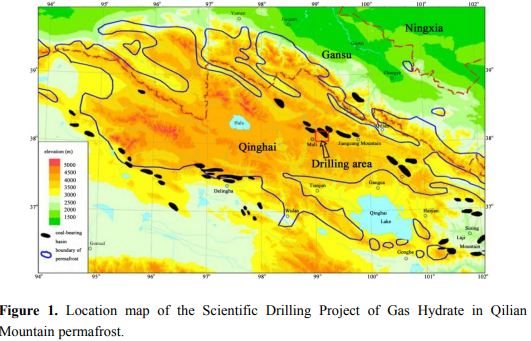
From northernmost Tibet heading south, the three biggest new parks are:
DOLA RIWO (QILIAN SHAN in Chinese). The mountains of northernmost Tibet, separating Amdo (Qinghai) from arid Gansu province are to become a national park of at least 50,000 sq kms. The prime beneficiary of locking out many of the drogpa nomads from Qilian slopes, to protect glaciers and rivers, is China’s rocket launch base far away in Inner Mongolia, That’s where the rivers of Dola Riwo end, in the desert sands where China built its plutonium factory for manufacturing nuclear weapons, later converted to rocket launchers, totally dependent on water from Tibet.
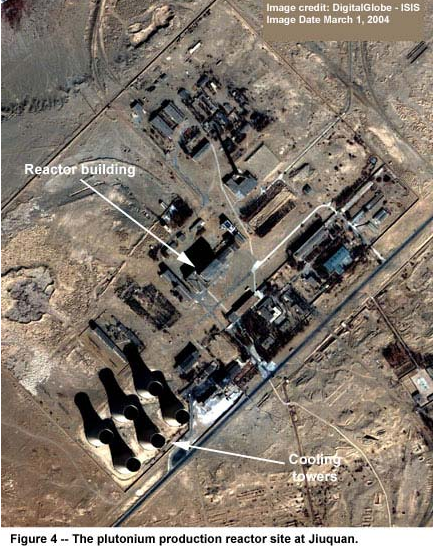
The World Bank’s Global Environment Fund (GEF) gave $5.4 million to the UN Development Programme between 2012 and 2017 to work closely with Qinghai provincial government to design this park, and the Sanjiangyuan park. A further $3 million of GEF money is being spent 2018-2023 on finalising design of the Qilian national park.
SANJIANGYUAN, meaning three river source, is a Chinese term that has no Tibetan equivalent, as it sweeps together two entire prefectures, Amdo Golok and Kham Yushu, plus several more counties, into a single entity facing lowland China, source of China’s great rivers, the Ma Chu (Yellow) and Dri Chu (Yangtze) plus the upper Za Chu (Mekong). Originally designated by China as 363,000 sq kms, bigger than Germany, it is at 2020 launch scaled back to 152,000 sq kms, to be scaled up later.
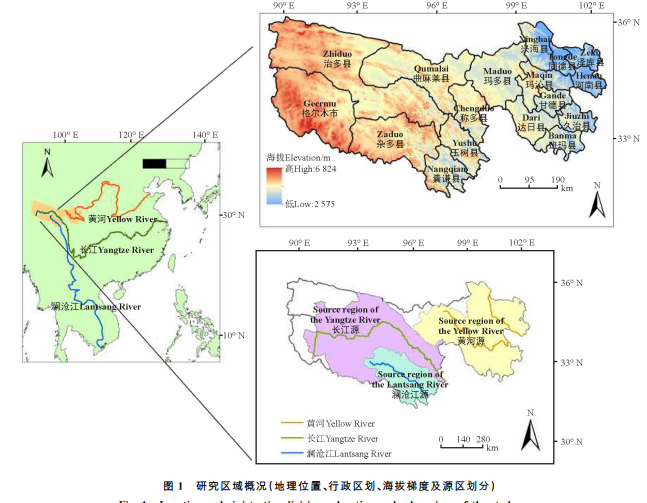
Although named for the glacial river sources, those rivers wind slowly across vast pastoral Tibetan landscapes before eventually dropping as wild mountain rivers to the lowlands. That’s why this park is so big. China, acutely short of water, is out to protect its “number one water tower”, which means excluding nomads and herds that poop on riverbanks, to grow more grass and create pristine wilderness tourists can marvel at.
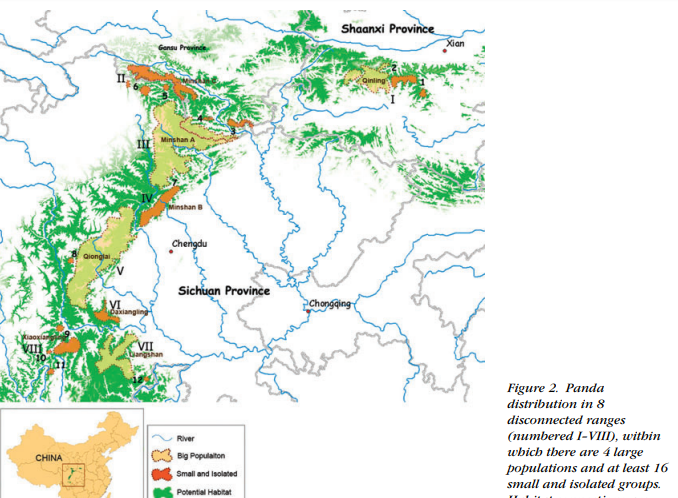
PANDA NATIONAL PARK Panda habitat used to cover the southern half of China, but no more. Now remaining panda habitat is on the eastern fringes of Tibet, in scattered reserves that are to be linked up in the hope of linking panda populations while excluding humans. China’s state news agency has reported that at least 170,000 people would have to relocate or adapt to new restrictions as part of the park’s overall plan. The panda is Tibetan.
4 CHINA WILL STIMULATE A SLOWING ECONOMY BY SPENDING BIG ON INFRASTUCTURE, INCLUDING HYDRO DAMS IN TIBET, POWER GRIDS, HIGH SPEED RAILWAYS AND TOLLROAD EXPRESSWAYS
The legitimacy of CCP rule has long depended on delivering a fast pace of growth and quick wealth accumulation opportunities. Now that growth has peaked and China is no longer the lowest of low wage economies, and Chinese manufacturers are relocating factories to Cambodia, Bangladesh and elsewhere, many Chinese now feel frustrated that their turn to get rich never came, and may never come. Popular frustration is what the CCP most fears, especially in the densely populated east, where crowds can quickly mobilise, unlike Tibet.
So the CCP will spend big to stimulate growth, even if that means sidelining promises to reduce carbon emissions and other environmental initiatives. Spending big in Tibet could include accelerating the construction of several expressway tollroads and railways thrusting deep into Tibet. It may also mean accelerating hydro dam construction, which will be represented as green energy, despite the damage done by hydro dams, from fish kills to earthquakes.
The hydro engineers have spent decades measuring remote Tibetan valleys and the gorges of steep mountain rivers, and the projects are already on official lists of what is authorised to go ahead. If the finance is allocated, construction will start, and the central government has now relaxed its rules on how much of the banks’ capital must be held back for emergencies, freeing up huge amounts for loans to favoured lenders, such as the state owned corporations that build dams and power grids.
The national parks story has a positive side, of skilful Tibetan social enterprises finding a niche.
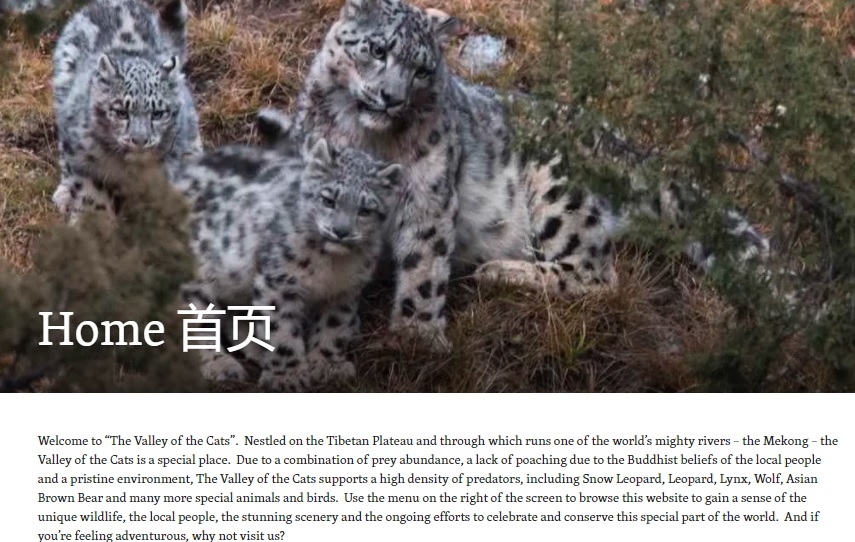
Rnam sras, often called Namsei or, in Chinese, Angsai, is a remote township in Zatö county, close to the Tibetan source of the Mekong, in Yushu prefecture. Township is an administrative fiction, bundling the scattered Tibetan nomads of this sharp mountainscape into an administrative unit. The upper Mekong winds its way through the valleys below the jagged peaks, landscapes too difficult for more than a few families, too remote for much official focus beyond counting the total population as fewer than 3400, in the 2000 census.
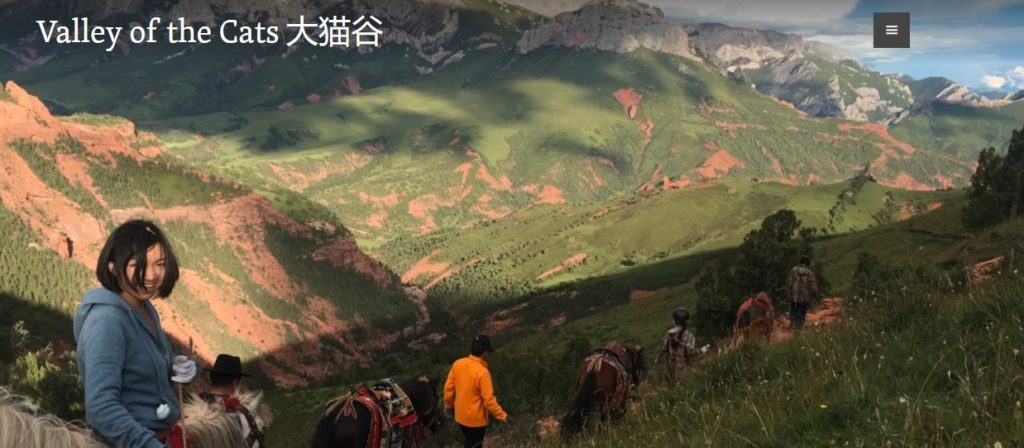
Zatö in Tibetan means source of the Za River, or Mekong. It remains a haven for wildlife, and is shortly to be incorporated into the Sanjiangyuan National park. The upper valleys and rocky slopes are home to agile deer, leopards and snow leopards, and many other rare species. Here in what is now becoming known as the Valley of the Cats a genuinely community run Tibetan enterprise hosts and guides a strictly limited number of ecotourists each year, with a chance to glimpse the rare and endangered snow leopard.
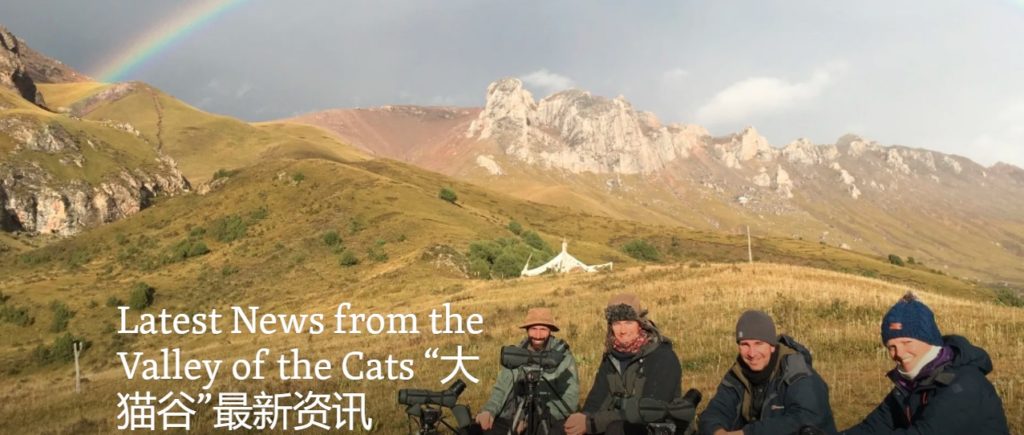
It’s a small miracle that intends to stay small, both for the sake of the animals, and to keep this social enterprise in local hands, not overtaken by China’s mass domestic tourism industry which is capable of funnelling tourists in the millions to precious Tibetan landscapes, as it does, for example, at Jiuzhaigou/Dzitsa Degu in Ngawa prefecture of Sichuan.
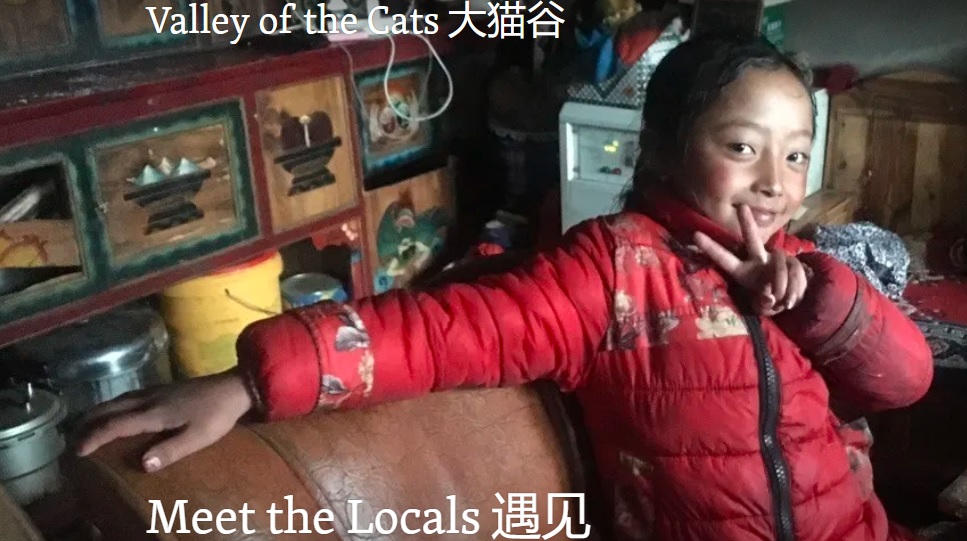
Valley of the Cats attracts animal lovers and film crews, people who know how to be patient, and happy to be accommodated in local houses by local people, yet pay well for this select privilege.
This is the upside of the Sanjiangyuan National park, which empowers the locals to keep out the masses, even to remove unauthorised campers and home stayers who try to bypass the Valley of the Cats wirth its’ package of translators, guides, wildlife conservationists, transport and home stays. None of this would be enforceable without Sanjiangyuan National Park zoning classification of the area as high conservation value, visitor numbers to be strictly controlled.
How is this small miracle possible in a centralised, authoritarian system based on mass tourism, mass consumption of iconic sites owned and managed by the state? It’s quite a backstory.
Quietly, Chinese NGOs such as Shan Shui and Plateau Perspectives have shown in practice that rangelands and pastoralists do go together, in the future as well as in the past, doing “eco-husbandry”, as active, skilful landscape managers. This has been a long, skilful and fruitful collaboration between remote Tibetan communities rich in wildlife and the elite Centre for Nature and Society, School of Life Sciences, Peking University. Working together carefully over decades built mutual respect, a recognition on all sides that local communities are better at conserving endangered species than distant governments.

During those decades elite Han Chinese learned to see landscapes and wildlife through Tibetan eyes, becoming over time sufficiently Tibetanised to reach for classic Tibetan locutions to express themselves. Du Fachun, for example, in his study of Tibetan exnomads displaced from their pastures but not successfully settled in peri-urban apartments, described their bardo as neither deer nor horse, neither cow nor donkey, classic Tibetan metaphors.
Such collaborations work in China, even in periods of authoritarian rigidity, finding niches that fulfil state agendas while ensuring programs are run by local communities rather than officials at the bottom of a top down chain of command. The Beijing elites have the right language, connections and impeccable academic credentials to protect the locals; the Tibetan communities do what they have always done, respecting wildlife, caring for the land, raising their herds.
Going back decades is Professor Lu Zhi, who has quietly supervised the emergence of several Tibetans now qualified as postgraduate fieldworkers whose reports she helps get published.[1]
The vehicle for this work of bridging the gaps between distant provinces, distant classes and distant ethnicities is Shan Shui, a conservation NGO artfully named after the mountains and rivers of classic Chinese painting, depicted in bold watercolour brush strokes. Embedded in classical art, Shan Shui has learned from its Tibetan partners how to do effective biodiversity conservation work that also sustains local communities. Implicitly, this is an alternative to blaming Tibetans for degradation, then clearing them off their lands, in the name of national park wilderness restoration.
Shan Shui came to the mountains and rivers of Tibet with open minds, and deep friendships were formed. Out of this has come Valley of the Cats, with a bilingual English and Chinese website inviting select visitors from around the world, introducing doco film crews to remote locations, featuring community conservation and the opportunity to meet the locals, and sleep under their roofs.
The actual upcountry valley where pastoral herding ends and wild country begins has only “22 resident families, each with their own herd of yak, hold strict Buddhist beliefs about the sanctity of all life and, as a result, have a harmonious relationship with the wildlife and environment. The densities of apex predators such as Snow Leopard, Leopard, Brown Bear and Lynx rival any place on Earth.”
This does not mean there are no pressures from above. Valley of the Cats tells us: “Given the pressure of overgrazing on the Tibetan Plateau, it is likely that the local people will be asked to reduce the number of yak in their herds. This has consequences for their already relatively low incomes and threatens their way of life. Many of the young people in the Valley of the Cats would like to stay but if incomes fall, they will be forced to leave for the city to earn a living. Wildlife watching tourism has the potential to help offset the reduction in income associated with reduced numbers of yak and thus could enable these families to stay in the valley and maintain their traditional way of life. The arrangements for wildlife watching tourism have been put in place in full consultation with the local government and the local community and will continue only if the community is fully supportive.”
Having patiently negotiated with all relevant organs as well as all involved locals, this modest enterprise is succeeding, both in bringing income to a remote part of Tibet, and in fulfilling nation-building objectives of the national park system.
5 2020 is the year China’s social credit surveillance system becomes fully operational
Police forces and security state bureaucracies worldwide are buying the big data mining algorithms marketed by cyber surveillance companies, turning their vast accumulations of data on each and all of us into probability predictions as to what we will do next. These predictive algorithms claim to know, before we each do, before the idea pops into my head, what crimes I am about to commit.
In western countries, this makes for harassment of young black men by police backed by the supposedly scientific objectivity of the data we generate every day on all our electronic devices.
In China, the consequences for those singled out as “precriminals” are much greater. One only has to look at Xinjiang’s mass detentions of “precriminal” Uighurs suspected of terrorist sympathies for nothing more than saying prayers, wearing a beard or a scarf.

To be registered under the compulsory hukou household registration system as Tibetan is to automatically be classified in a high risk category, to be monitored more intensively. To be young and male adds to the risk profile, and to the selective attention of the security apparatus believing it has the ability to prevent crime well in advance.
In the West, there are limits on what police can do to someone who has not committed a crime. In China, there are no such limits. The security state’s paranoia is unchecked.
6 UN GLOBAL CONVENTION ON BIODIVERSITY TO BE HELD IN CHINA, ALSO UNESCO WORLD HERITAGE COMMITTEE DECISION MAKING SESSION
CBD 5 October 2020 [tentative] location: Kunming, Yunnan www: https://www.cbd.int/cop/
This is an especially important meeting of the CBD biodiversity convention, as it will set targets to be fulfilled by decade end in 2030, after this last decade’s failure to achieve much in slowing the rate of species extinctions. By holding this event in Kunming, at the foot of the Tibetan Plateau, draws attention to China as world’s biggest consumer of rare and endangered species, and trafficker of wildlife for the insatiable Traditional Chinese Medicine market.
7 UN CLIMATE CHANGE GLOBAL CONFERENCE 2020
After the complete failure of the UN Framework Convention on Climate Change (UNFCC) gathering in Madrid, December 2019, the next chance for effective global action on the climate emergency is scheduled for late 2020, with Glasgow the host city, 9 to 20 November.
In Madrid, China, as usual, insisted on being both a developing country entitled to lesser emissions reduction obligations, and part of the club of richer bullies who insist on doing nothing effective on climate change. Since the US is pulling out altogether, and other rich countries such as Saudi Arabia, Australia and Brazil are overtly bad actors, out to sabotage effective action, China’s obstructive role got less attention. Yet China did send the rich country a bill, of trillions of dollars, to be paid to China to reduce emissions, while also siding with other big emitters to thwart even something as basic as an agreed audit of actual emission levels, or a standard of measuring actual emissions.
Stand by in 2020, for talk of China announcing more “ambitious” emissions reduction goals, in UN jargon NDC, Nationally-Determined Contributions, which means that all Paris 2015 managed to agree on was that each country sets its own target, with no external oversight or accountability. China has never committed to any specific tonnage of emissions reductions. China in 2015 announced only that it will begin reducing emissions starting 2030, even though that is the year, at the end of this decade, when, according to the authoritative IPCC Intergovernmental Panel on Climate Change, all countries should have completed the closure of coal burning power stations, and completed their emission reductions trajectory. So if in 2020 China does announce it expects to begin emission reductions a bit earlier than 2030, it will get glowing media coverage.
Dissenting voices are needed, ideally from folks who never caused the climate emergency in the first place but suffer its consequences, such as Tibetans.
In 2019 the IPCC issued special reports which focussed attention on Tibet. In 2020 IPCC is gearing up for their once-every-five-years Assessment Report, to be issued in 2021. So 2020 for IPCC is packed with meetings of authors and writers, thus opportunities for ongoing lobbying: https://www.ipcc.ch/calendar/
The UNFCC COP26 in Glasgow is scheduled for 8 to 20 November 2020.
Timeline of OTHER EVENTS OF 2020
a) Taiwan general election 11 January, outcome heavily influenced by overt and covert pressure from China, including social media manipulation and disinformation.
b) World Economic Forum 21-24 January , Switzerland www: https://www.weforum.org/events/world-economic-forum-annual-m…
c) YANGTZE River Protection Law to protect the whole of the Yangtze/Dri Chu from its origins in Amdo Ngawa and Kham Kandze, all the way to Shanghai. China’s National People’s Congress is due to approve this law in March. https://npcobserver.files.wordpress.com/2019/12/yangtze-river-protection-law-draft.pdf in 2020, and “persons living in the Yangtze River basin” [长江流域所在地人员] are officially invited to comment on the draft law before it is passed. This law could empower Tibetans to object to the many hydro dams, biggest in the world, planned for the upper Yangtze.
d) Global Biodiversity Outlook. Every six years the UN Convention on Biodiversity sums up all that is known about all species on earth, and their path towards extinction. date: 18 May 2020 location: Montreal-Est, Quebec, Canada www: https://www.cbd.int/gbo Since China is overwhelmingly the world’s biggest consumer of rare and threatened animals and plants worldwide, this is an opportunity to highlight China’s record.
e) IUCN World Conservation Congress: A huge gathering of scientists and NGOs and governments to assess progress towards a protected planet and conservation of Nature, major lobbying opportunity, which China will use to promote its national parks as exemplary ecological civilisation construction. Marseille, France 11 to 19 June
f) KAILASH and world heritage https://whc.unesco.org/en/sessions/44COM/ UNESCO WORLD HERITAGE Committee meets in Fuzhou, China to decide whether to accept nominations for World Heritage status, 29 June to 9 July. Sites in Tibet are on the waiting list, perhaps for a 2020 decision, including Kailash Sacred Landscape, which is mostly in India and Nepal, with just a small portion in Tibet, and only 9000 Tibetans classified as stakeholders with any say at all. On the Indian and Nepal sides there is a population of over one million, keen to see roads hotels and development, with Kailash the magnet drawing in the tourist/pilgrims. The six million Tibetans who make this sacred landscape sacred are disempowered, and have no say.
Tso Ngonpo/Koko Nor/Qinghai Hu is on the official “tentative list” for consideration, possibly in 2020, as World Heritage.
g) OZONE HOLE ABOVE TIBET There are three holes in the ozone layer that protects all living things from damaging ultraviolet radiation, over the Antarctic, Arctic and Tibet. Two UN Conventions have failed to curb illegal production in Chinese factories of chemicals that float high into the atmosphere and collect above Tibet, destroying the ozone layer. The Joint 12th meeting of the Conference of the Parties to the Vienna Convention for the Protection of the Ozone Layer (COP 12) and 32nd Meeting of the Parties to the Montreal Protocol on Substances that Deplete the Ozone Layer (MOP 32) is scheduled to take place from 23-27 November 2020 in Tashkent, Uzbekistan.
h) In August 2020 a new book will come out declaring nomads to be the wave of the future. The author, Felix Marquandt, says: “Young people from everywhere are moving everywhere. Or rather, they are moving to where they expect to improve their lives. Movement has become a key to their emancipation. After centuries of becoming sedentary, the future of humanity and the key to its enlightenment in the 21st century lies in re-embracing nomadism. Migration fosters the qualities that will allow our children to flourish and succeed. Our times require more migration, not less. The New Nomad is both the chronicle of this revolution and a call to embrace it.”

This is a global movement, pioneered by the young Tibetans of New York, Antwerp, London, Toronto and Paris. Free movement is the opposite of the involuntary displacement of Tibetans coerced into giving up their land rights to pasture.
i)TV doco on Valley of the Cats by Ray Mears to screen on ITV, Britain, autumn 2020 featuring footage of snow leopards
j) 2020 is a Census year. Once every 10 years China sends census data collectors everywhere, even quite remote places, gathering a huge trove of data on ethnicity, language, education, literacy, income and lots more, which then gets tabulated and months later in 2021 published. Census data is usually more reliable than other official statistics that are reported up the line by local officials out to boost their declared performance and get promoted. The 2020 Census starts on 1 November. Back in 2000 Census published how many of each of the 56 ethnicities reside in each of the 2000 counties of China, including the 150 counties (dzongs) officially designated as Tibetan Autonomous. But the 2010 Census suppressed revealing any county by county ethnic spread data. The 2010 census did confirm total population of the Tibetan Plateau reached over 10 million, including 6 million Tibetans. Xining and the surrounding agribusiness/industrial belt encircling Xining have grown greatly since 2010, so expect a 2020 total population of the Tibetan Plateau of 12 million.
[1] Minghao Zhuang, Dr Gongbuzeren, Jian Zhang, Wenjun Li; Community-based seasonal movement grazing maintains lower greenhouse gas emission intensity on Qinghai-Tibet Plateau of China, Land Use Policy 85 · April 2019